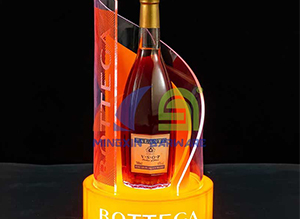E-mail: jasmine@mingxinbarnclub.com
The world of champagne is too big, and the questions we can ask are like the number of sands in the Ganges. All of the above are just representative problems that we encounter most often, and they are also one of the reasons why everyone who is still lingering at the Champagne door or just starting to drink Champagne is troubled.
Maybe you have only heard of champagne, maybe you have only drunk champagne at weddings, celebrations, and F1. But I have never understood what real champagne is, or that we can drink champagne at all times, occasions, and locations.
So, in the end...
1What is champagne?
Champagne is a kind of wine, and it is the most unique existence in the entire wine world. It is produced in the Champagne region with a long history in France, which embodies the extreme quality of Champagne people. With a unique and mature marketing model, the above three points make Champagne stand on the top of the world wine in terms of quality and status. .
You know, not all grapes can be used to make fine wines, and not all sparkling wines can be called champagne. Let us define Champagne, that is:
2 Definition of Champagne
Only in the Champagne region of France, the sparkling wine made by the champagne method with the grape varieties specified in the Champagne region can be called Champagne.
In addition, sparkling wine produced in other countries or non-champagne producing regions in France, even if it uses the grape varieties specified in the Champagne region and uses the same brewing method as the Champagne region, it can only be called traditionally brewed sparkling wine. Instead of champagne.
Because the law stipulates that champagne must come from the Champagne area.
Having said so much Champagne, where is it?
3 Location of Champagne
The Champagne region is located in the northeast of France and is the northernmost wine-producing region in France. The important city, Reims, is only 150 kilometers away from Paris. The Champagne area is heavily influenced by the alternating oceanic climate and continental climate, with a relatively low average temperature. There are large areas of limestone in the underground soil.
In addition to the use of the champagne brewing method and the regulation of grape varieties just mentioned, champagne also needs to follow more complex and refined rules and laws. such as:
Limited grape yield per hectare of vineyard
Planting gap
Vineyard management methods
It needs to be aged in the cellar for at least 15 months after the second fermentation
Etc., etc...
Such complex rules determine the refreshing and delicateness of champagne, as well as its unparalleled characteristics.

Bottle Presenter
4 The difference between champagne and sparkling wine
To distinguish whether a sparkling wine is Champagne, everyone only needs to grasp the two key points of "French Champagne Region" and "Made by Champagne Method".
So, what is the "champagne method" brewing?
Before that, let me talk about the definition of sparkling wine. The so-called sparkling wine refers to the large amount of carbon dioxide dissolved in the wine, which is revealed through bubbles. Its production process is not complicated to say, that is, after the first alcoholic fermentation, the fermented wine is put into different containers for the second fermentation to produce bubbles.
5 Champagne brewing
The most special aspect of the Champagne brewing method is that the first fermented wine is put into a bottle for the second fermentation, and the final bottle sold is the bottle used for the second fermentation. To put it simply, although there are many varieties of sparkling wine, champagne is the most special one. This process can be said to be a journey of champagne's cocoon and butterfly. Fermented in stainless steel tanks or oak barrels, after alcohol fermentation, lactic acid fermentation, etc., the base wine that has experienced a cold winter will be blended in the spring of the second year. The base wine after blending enters the process of transformation from static wine to sparkling wine-secondary fermentation. After this step, the static base wine truly transformed into champagne.
We all know that wine involves a variety of grape varieties. Champagne is the same. However, the law has stricter requirements on Champagne, and only those made with the prescribed seven kinds of grapes can be called Champagne.
6 Grapes for Champagne
They are: Pinot Noir, Chardonnay, Meunier, Arbane, Pinot Blanc, Pinot Gris, Petit Meslier. These seven kinds of grapes are also planted elsewhere, and other producing areas will use them to make sparkling wines to get closer to the flavor of champagne. Just remember that only sparkling wine made from these seven grapes in the Champagne region can be called Champagne.
It is the unique terroir and the laws governing the protection of origin that only sparkling wine made in the Champagne region of France can be called Champagne.
Therefore, do not call sparkling wines such as Cava in Spain, Prosecco and Asti in Italy, and Sekt in Germany as champagne. You must recognize that only sparkling wine produced in the Champagne region of France is champagne. We are a Bar LED ice bucket supplier. If you are interested in our products, please feel free to contact us.
Copyright © MingXin Barware Co., Limited All Rights Reserved. | Sitemap